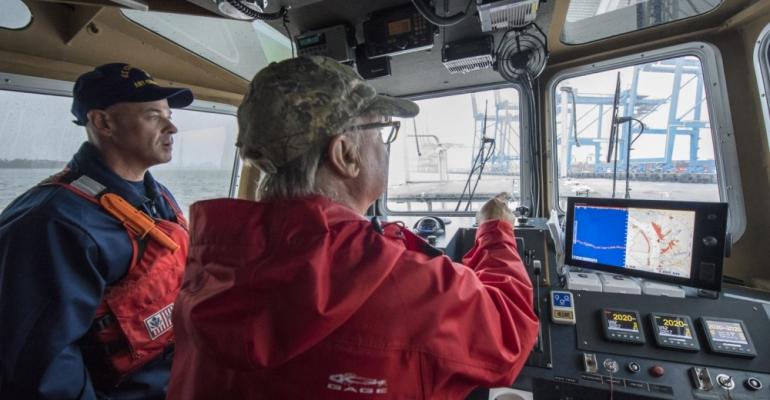The hurricane had reached “Category 4” (130 to 136 miles per hour max. sustained winds) status as it churned across the Atlantic. By the time it made landfall, near Wilmington, North Carolina, its winds had reduced to “Category 1” (winds 74 to 95 mph).
Liners serving ports in the region (notably, Savannah, Charleston and Norfolk) had adjusted their schedules and sheltered vessels. The hallmark of this storm was its very slow movement over the land, causing extensive flooding in the region- including around Morehead City, N.C.
The US Coast Guard had suspended transits into the ports at Hampton Roads/ Norfolk early on, before the storm turned southward.
Once the ports in Virginia and the Carolinas re-opened, as they have now done, the bigger issues will concern replenishing flows on the inland supply chain links. Small disruptions had been experienced as motorways had been briefly closed,or routed westbound only for evacuations.
The South Carolina State Port Authority (SCSPA) was still evaluating the situation at its inland depot, at Port Dillon, one of the origination points for railway links to the coast, even after operations had resumed at Charleston.
The CSX rail line, one of two Class 1 rail-lines with links to the coast, had temporarily closed its rail yard at Rocky Mount, N.C., about 100 miles inland. The Norfolk Southern Railroad, the other big linkage to coastal seaports, had temporarily closed its terminals near Charlotte, N.C., about 150 miles inland, as the storm, now downgraded below hurricane strength, moved westward from the coast.
Here is a port by port review of what happened:
Georgia:
Savannah- Port remained open, but US Coast Guard established a safety zone
Brunswick- Port remained open
South Carolina:
Charleston – three day closure due to high winds
Georgetown- three day closure, evacuations, power outages
North Carolina:
Wilmington- port closure, evacuations, power outages
Morehead City- port closure, evacuations, power outages
Virginia:
Norfolk- port operations OK, but US Coast Guard had suspended transits off Virginia Capes
Hampton Roads- briefly evacuated
Copyright © 2024. All rights reserved. Seatrade, a trading name of Informa Markets (UK) Limited.
Add Seatrade Maritime News to your Google News feed.  |


